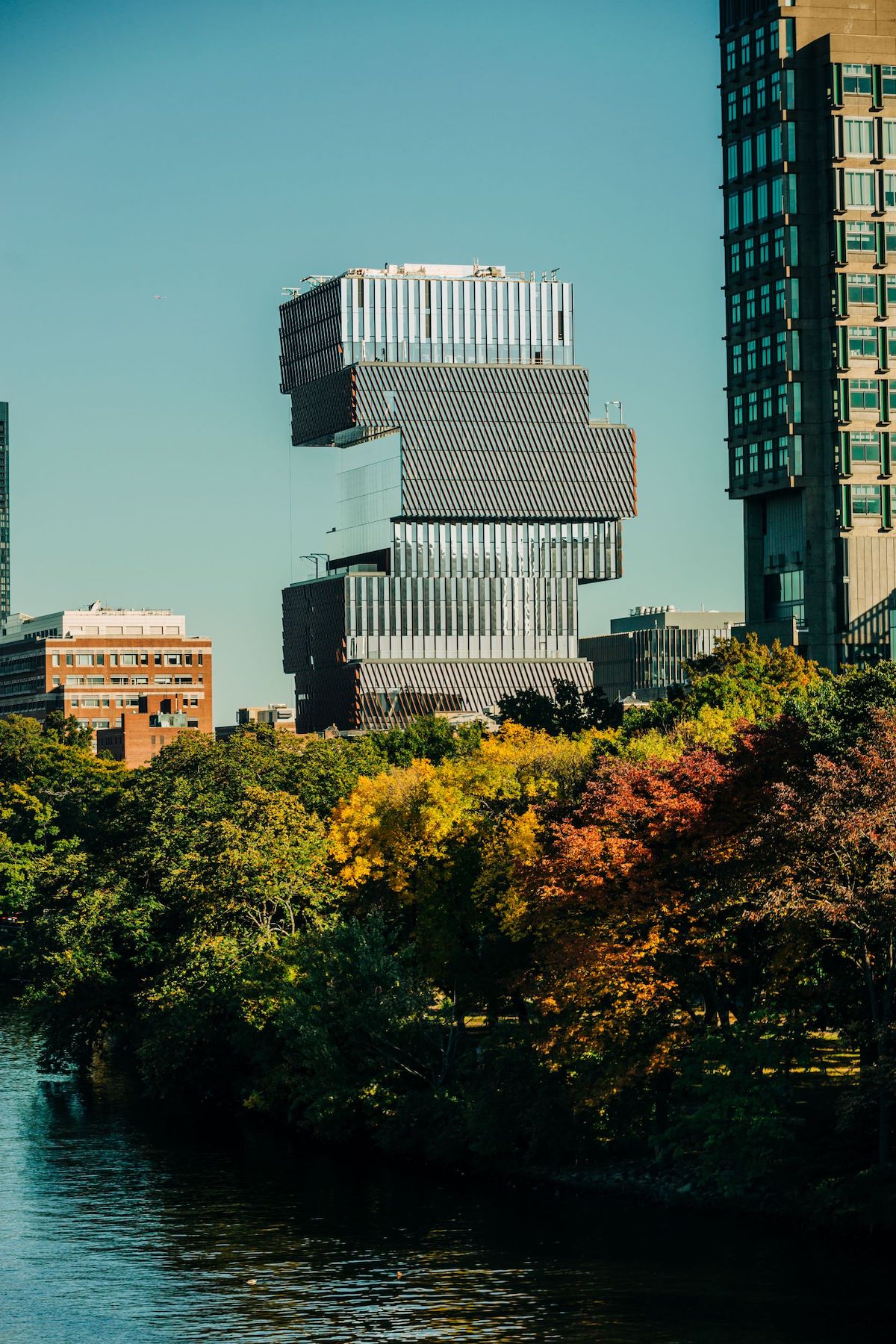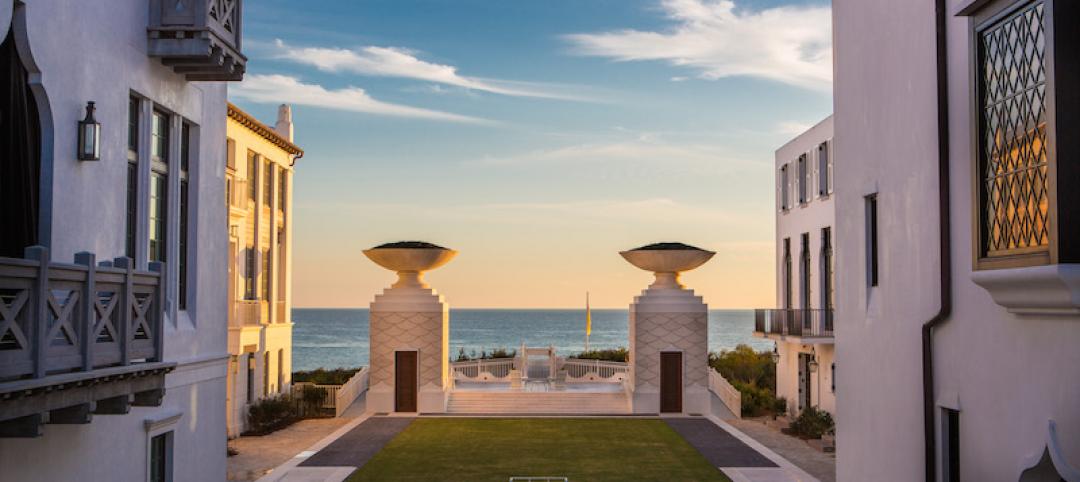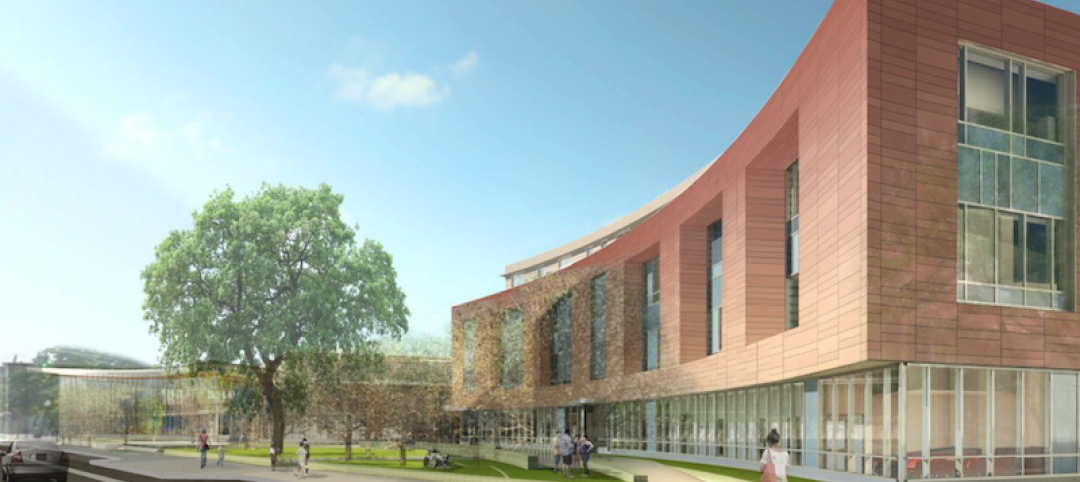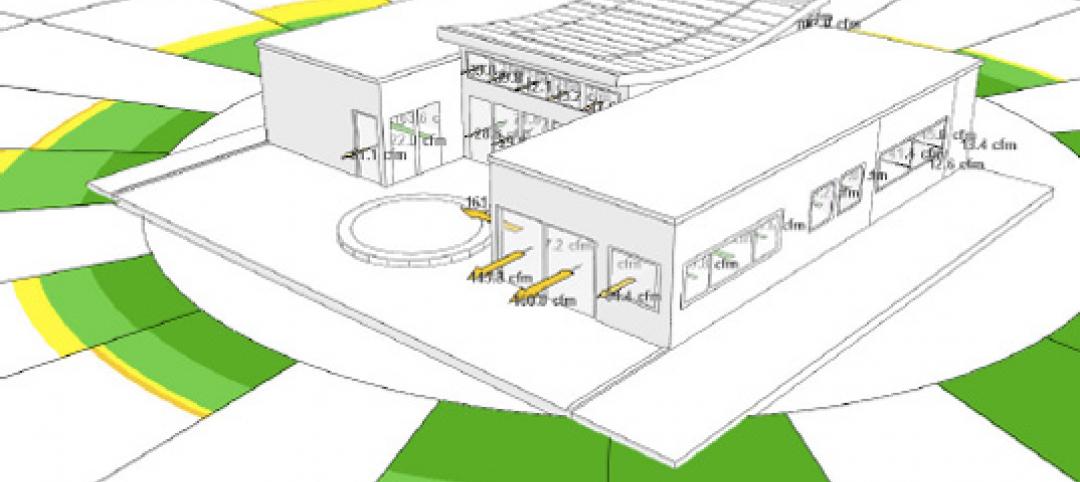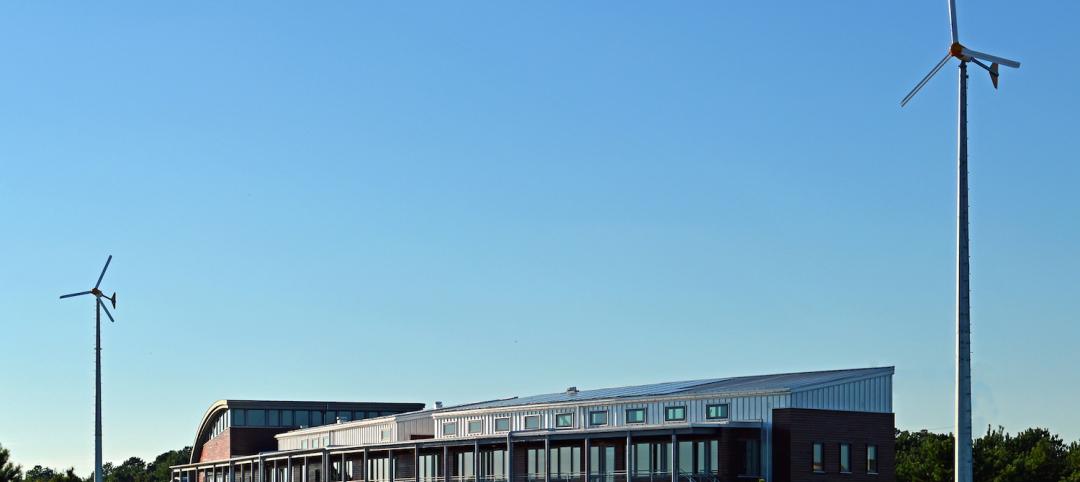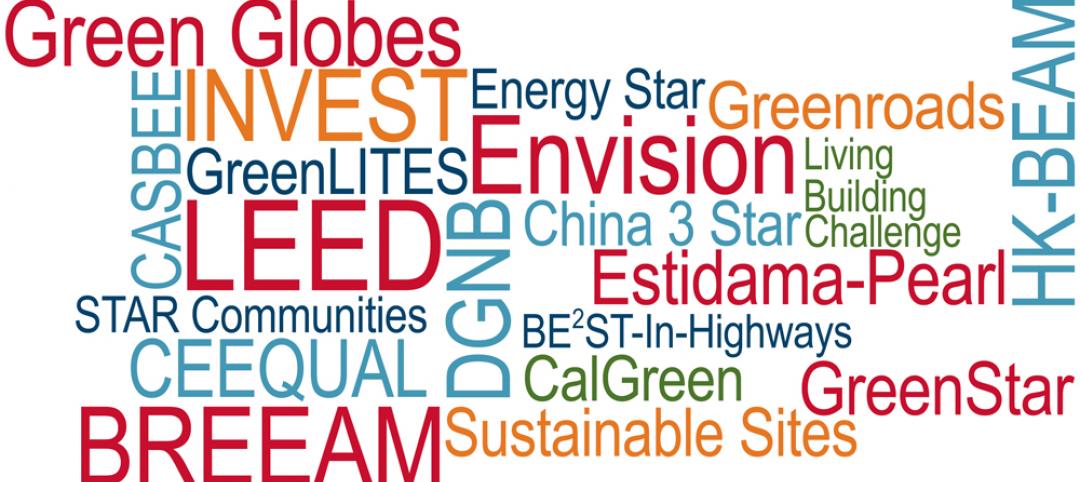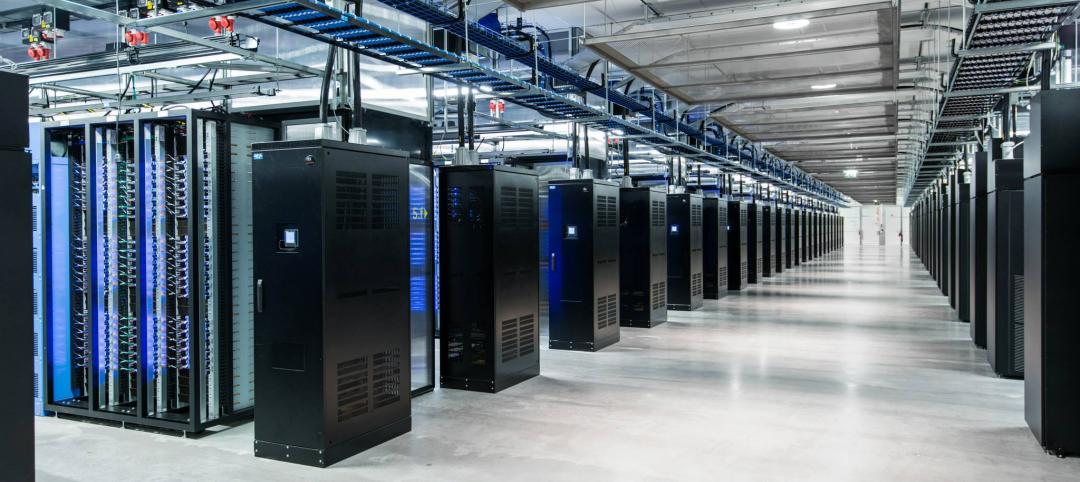The Boston University Center for Computing & Data Sciences has opened on the college's Charles River campus as one of the most sustainable and energy efficient buildings in Massachusetts.
The GC and construction management firm Suffolk, which is headquartered in Boston, delivered this 19-story 345,000-sf building, which is 100 percent fossil-fuel free as a result of the installation of a geothermal system with 31 bores, each about 1,500 ft deep into the earth, that harness thermal resources for heating and cooling the building.
The installation of this system puts BU at the vanguard of Carbon Free Boston, the city’s 2050 carbon neutrality goal. Other energy saving features in the building include triple-glazed windows, staircases that reduce elevator usage, and terraces and green roofs.
Designed by Toronto-based KPMB Architects, the Center will house the university’s newly created faculty of computer and data sciences, its Mathematics and Statistics department, its computer science programs, the BU Spark! Technology incubator, and the Rafik B. Hariri Institute for Computing and Computational Science & Engineering.
“We are in a data-driven revolution, and Boston University is committed to leading in this revolution,” said BU President Robert A. Brown.
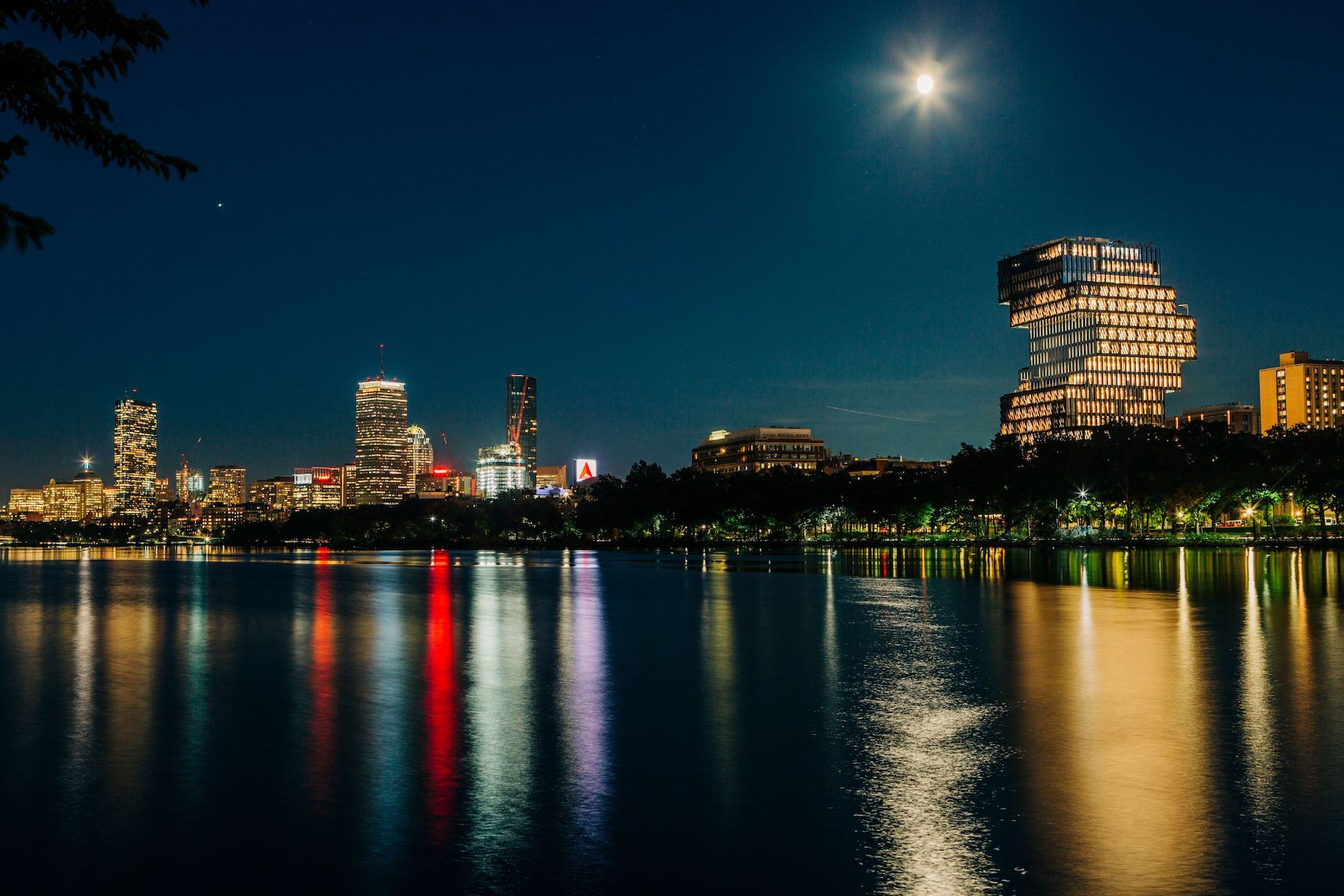
The facility itself is designed with intellectual collaboration in mind, featuring an all-glass interior that creates transparency and invites light deep into the building. The unique design of the structure, which is composed of a series of floorplates shifted and cantilevered around the building’s central core, creates a vertically stacked and staggered layout of “neighborhoods” for each academic discipline.
Departments occupy 12 floors that sit atop a five-story podium. There are also two mechanical floors. Blocks of two-to-three floors are slightly off-center from the block below them, and give the building the appearance of being a giant stack of books. Its glass-and-steel exterior are designed to reflect natural light dramatically but also limit direct sunlight from entering the interior spaces. The building “calls attention to itself,” said Luigi LaRocca, KPMB’s founding principal and project manager, in an interview with BU Today.
The $305 million Center was built on a university-owned parcel that was formerly a parking lot and, before that, a Burger King.
Related Stories
Resiliency | Jan 24, 2018
A luxury community in Florida mandates resilience in new-home construction
Alys Beach’s in-house GC builds to standards set by the FORTIFIED program.
K-12 Schools | Oct 28, 2017
A new elementary school in Cambridge, Mass., aims at being a pilot for that city’s NZE commitment
The building’s programming will provide more access to the community at large.
| Dec 28, 2014
Using energy modeling to increase project value [AIA course]
This course, worth 1.0 AIA LU/HSW, explores how to increase project value through energy modeling, as well as how to conduct quick payback and net present value studies to identify which energy strategies are most viable for the project.
| Nov 25, 2014
Behnisch Architekten unveils design for energy-positive building in Boston
The multi-use building for Artists For Humanity that is slated to be the largest energy positive commercial building in New England.
| Nov 12, 2014
Chesapeake Bay Foundation completes uber-green Brock Environmental Center, targets Living Building certification
More than a decade after opening its groundbreaking Philip Merrill Environmental Center, the group is back at it with a structure designed to be net-zero water, net-zero energy, and net-zero waste.
| Oct 15, 2014
Harvard launches ‘design-centric’ center for green buildings and cities
The impetus behind Harvard's Center for Green Buildings and Cities is what the design school’s dean, Mohsen Mostafavi, describes as a “rapidly urbanizing global economy,” in which cities are building new structures “on a massive scale.”
| Sep 15, 2014
Sustainability rating systems: Are they doomed?
None of the hundreds of existing green building rating systems is perfect. Some of them are too documentation-heavy. Some increase short-term project cost. Some aren’t rigorous enough or include contentious issues, writes HDR's Michaella Wittmann.
| May 22, 2014
Big Data meets data centers – What the coming DCIM boom means to owners and Building Teams
The demand for sophisticated facility monitoring solutions has spurred a new market segment—data center infrastructure management (DCIM)—that is likely to impact the way data center projects are planned, designed, built, and operated.
| May 20, 2014
Kinetic Architecture: New book explores innovations in active façades
The book, co-authored by Arup's Russell Fortmeyer, illustrates the various ways architects, consultants, and engineers approach energy and comfort by manipulating air, water, and light through the layers of passive and active building envelope systems.
| May 16, 2014
BoA, USGBC to offer $25,000 grants for green affordable housing projects
The Affordable Green Neighborhoods Grant Program will offer 14 grants to developers of affordable housing in North America who are committed to building sustainable communities through the LEED for Neighborhood Development program.


